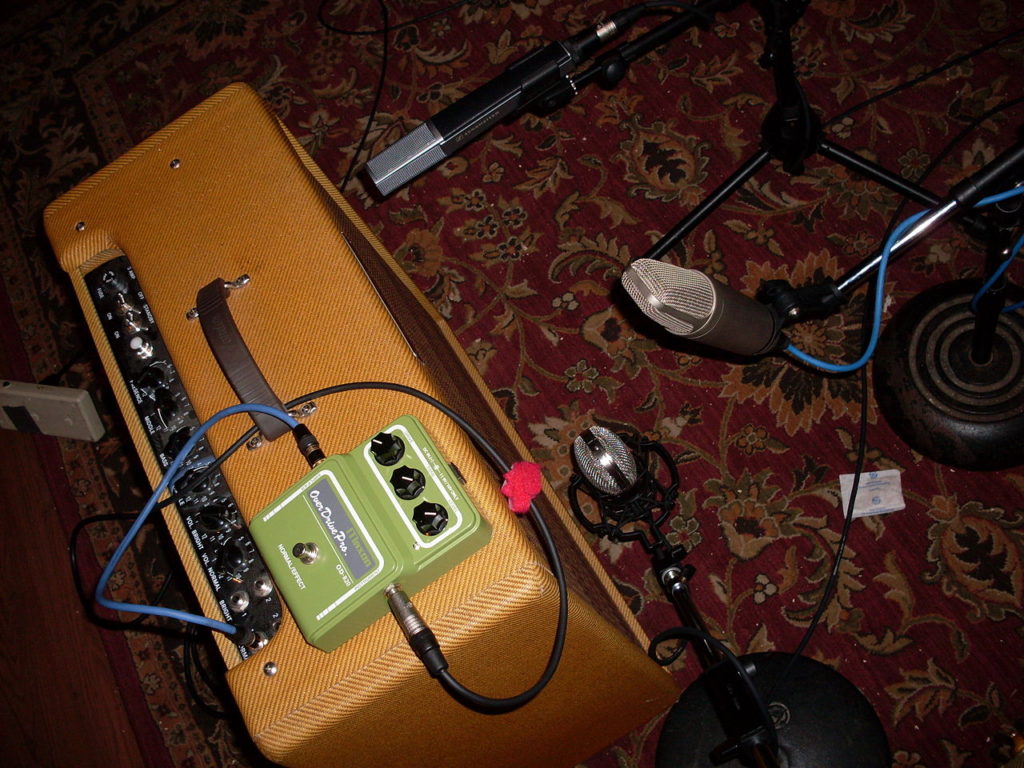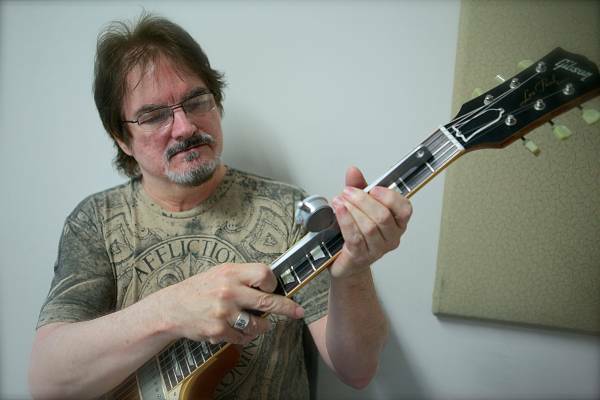3 Tips for Great Guitar Tone in the Studio
It’s easy to get lazy in the studio – especially when recording guitar tracks. You place the mic directly in front of the speaker on the guitar cabinet and you let it fly, right? Well, that is a tried and true technique, but sometimes it’s good to experiment. The song is the most important part of a recording, but using some clever guitar tricks can really make the song stand out. Here’s three things to try:

- Use Two Microphones
Almost every time I record a guitar track I use two microphones. I don’t always use both signals, but it gives me options when I’m in the mixing process. Putting one mic on one speaker and another mic on another speaker is good (assuming you have more than one speaker in your guitar cabinet). Every speaker and microphone has a slightly different character. If you don’t have two speakers (or even if you do) try putting a mic directly on the cabinet and another elsewhere in the room. Blending these microphones creates a reverb effect. Or put one mic on the cab and one in another room but crack the door just a hair. If you’re recording in your house, put one of the microphones in the bathtub. If you have an open back cabinet, you can try putting one microphone in the back of the cab and another in front. The one that’s in the back will give you some more low end, mix the two together and you might have something really cool. You may end up scrapping the second mic, but don’t be lazy: it doesn’t take that much time to set up and it gives you a lot more choices in the mix.
- Different EQ Settings and Effects
There are countless ways to create unique blends of tone. You can set your amp’s eq differently and record two takes. Try one with a nice high end sound and the next with a low end tone. Blend them. Use your neck pickup on one take and your bridge pickup on the next. Blend them. Use a different guitar effect on two takes. Compress one guitar, pan it to the left. Leave the other uncompressed, and pan it to the right. Or use two completely different guitars on two takes and blend them. Play one take with harder pick attack and play the other softer. Blend them too. You get the idea.
As always, it really helps if you master playing to a click for these techniques. Playing rhythm parts and getting a similar feel shouldn’t be that difficult. Playing solos might be trickier. You may have to deliberately craft the part and play it a bunch of times to get the two takes to sound seamless, but it will be worth it. Working with this two-take technique will send your recordings to a whole new level. You’ll soon start to realize how often it is used on the big name recordings.
- Use Less Gain Than You Think
Guitarists like Eddie Van Halen and Stevie Ray Vaughn are known for their distorted sound. They use overdrive and distortion to cut through the mix and deliver blistering leads. But, if you really listen, they might not always be turning their amps to eleven. Some of the most beautiful leads on electric guitar have very little overdrive. The playing makes the parts sound heavy. The pickup settings play a big part. Play with your gain structure on your guitars and amps. You may find that when you need a powerful lead line, cranking your settings isn’t always the answer. It’s a myth that Jimi Hendrix would “dime” (turn them up to ten) all of his settings on his Marshall 100 watt amps as soon as he got on stage. I’m going to bet that was just stage theatrics. I’ve owned 100 watt Marshalls from the 60s and if you crank them up to ten they sound like garbage. You need to use subtlety when you are recording guitars. And you need to experiment when recording. What sounds good to you in the rehearsal room might not sound great on the track.
Bonus Tip: The Stark Take
Try recording a guitar through a clean amp with no distortion, no reverb, nothing but pure raw tone. Put some new strings on your guitar, make sure it’s intonated properly, and play with feeling. Let’s face it, music is all about feeling. A simple melody played well and with emotion is the best part of the song. And, sometimes nothing is better than something.

